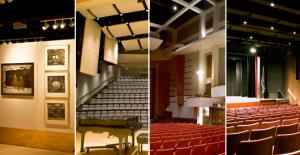 pac.mercyhurst.edu photo: MIAC is enjoying an extremely successful first year, making many improvements around campus.
pac.mercyhurst.edu photo: MIAC is enjoying an extremely successful first year, making many improvements around campus.
With the transition from college to university, Mercyhurst inaugurated the Mercyhurst Institute for Arts and Culture (MIAC), which will oversee the arts programming in the Mary D’Angelo Performing Arts Center (PAC).
The director for the MIAC, Jamie Grady, looks to develop academic programs in the various branches of arts management while overseeing the planning of the PAC events for each season.
Although the 2012-2013 event season was programmed before the institute’s inauguration, Grady begins his administration of the MIAC with world-renowned performers such as guitarist Pat Metheny, among others.
About the changes coming with the introduction of the MIAC, Grady said, “To the Erie community, little change will be apparent; we will offer the same world-class performances expected of Mercyhurst University, but internally our intention is to promote student involvement and to create a greater appreciation for the arts among them.”
The program looks to increase student involvement and interest on the events held at the PAC by means of contests, giveaways and the use of social media outlets.
With the introduction of the Mercyhurst Institute for Arts and Culture, students who wish to pursue careers in arts management or theatre tech can earn credits for their work at the PAC, Walker Recital Hall and the Taylor Little Theatre.
Vice President for Academic Affairs Phil Belfiore, Ph.D., said, “Like any successful organization, Mercyhurst is always looking to improve and to create opportunities to enhance the student experience.”
Grady wants to work with the Mercyhurst community to make the arts more accessible and entertaining to the students, who frequently perceive these performances as “boring.”
“The environment should be fun, social and open to students’ curiosity,” said Grady. “I think once we get them in the doors, we’ll be able to create lifelong attendees of the arts.”






